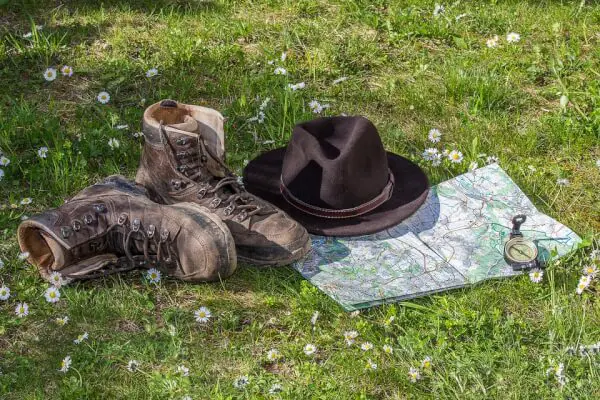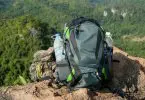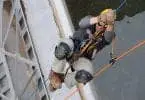The outdoors is one of the most popular places to spend leisure time and start new hobbies. The outdoor equipment industry is one of the fastest growing, multi-billion dollar a year industry. It seems each year is met with a brand new outdoor clothing or equipment company and every weekend has some sort of outdoor expo. At many of these expos, beginners can take a class, typically called Hiking 101.
The most popular hobby among outdoor activities is hiking. With movies like Wild and A Walk in the Woods creating a particular interest in thru-hikes and backpacking, it’s no wonder 2016 saw one of the largest increases of hikers on the Appalachian, Pacific Crest, and Continental Divide Trails. This was also met with a large increase in the number of people in National and State Parks, as well as smaller local trails and parks.
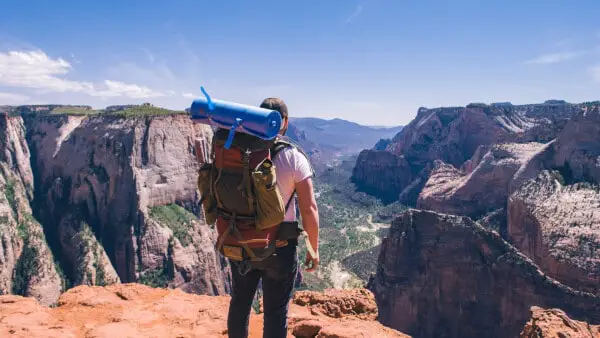
Dozens of studies have shown hiking is a great way for physical and psychological health and is a great way to exercise without having to hop on the treadmill for hours at a time.
See also: Best Hiking Apps: Taking Your Hiking Trips To a New Level
Like any new activity, it’s difficult to get started and can be just as difficult to know where to start. Below is a beginner’s guide to hiking complete with equipment and necessities, where to go, helpful apps, taking your furry friends, and basic trail etiquette.
For Starters…
How to get into hiking? First things first. Anyone can go hiking. I don’t care if you’re 300 pounds with a prosthetic leg, you can get on a trail anywhere, go hiking, and enjoy it.
The biggest obstacle stopping anyone from going for a hike is attitude. If you think you won’t enjoy the hike, you probably won’t. Before stepping on any trail it’s important to clear your mind of any expectations and try to objectively assess whether or not you like hiking. To find out the benefits of hiking for the body, check out our earlier article for reference.
The only thing stopping you from hiking and enjoying the hike, is you. Now that all that’s out of the way, there are some basic pieces of equipment everyone needs before setting off to the trailhead.
Footwear
The single most important piece of equipment for any hiker is footwear. There are several different styles and types of footwear, all with their own positives and negatives and all with a specific intent.
The most common and most well known type of foot wear is the traditional, leather boot with high ankle support and, in theory, high durability. Traditional boots are meant to provide support and protection to both your foot and ankle on uneven and rocky trails. Typically a bit on the expensive side, the traditional boot is what you will most commonly see on most trails due to their longevity and versatility.
Traditional boots will most likely cost you over $100 because of the amount of leather used and time consuming construction. You can usually find decent traditional boots for a better price though you should be careful as these boots usually don’t last as long.
Check out: Toddler Hiking Shoes: Buying the Best for Your Tiniest Trailblazer
The second most common type of footwear for hiking are trail runners or low top hiking boots. There are a lot of styles and varieties that fall under this category but the basics of all of them are more or less the same. Made from synthetic materials, trail runners are smaller, lighter and much more breathable than traditional boots.
The point behind them is lightweight comfort and are particularly popular among long distance and thru-hikers. Instead of trying to support and protect the foot and ankle, trail runners are typically meant for hikers who are used to uneven terrain or those looking for something lighter and easier to move in than traditional boots.
Less expensive than traditional boots, trail runners and low top boots are still relatively expensive and some reach extremely high prices. For new hikers looking for a lighter weight shoe, you should be able to get away with spending around $50-80.
The third and least common type of footwear (though they are gaining a bit of a cult following) are hiking sandals. Not your common flip-flops, hiking sandals are a great alternative for those used to walking barefoot or wanting to start getting comfortable walking barefoot. They are the lightest type of footwear, naturally, and offer very little in the way of ankle support or protection. For a more comfortable alternative, check out our review of the best hiking sandals for more information.
Recommended Reading: We’ve written a whole article on barefoot hiking that you might be interested in.
Simplicity is main idea behind the construction of trail sandals and they are often only a rubber sole and straps to secure the rubber to your feet. I wouldn’t recommend these to any new hiker though it is good to be aware of them as an option for future hikes.
Clothing
After shoes, your clothes are the most important pieces of equipment to consider and plan before you hit the trail and start taking selfies on a ridge. There are a lot of different opinions about what types of clothes you should wear and what’s better for what environment, etc. My biggest piece of advice in this particular area, don’t wear jeans or anything you don’t want ruined.
Jeans are made of denim which is more or less a cotton blend that doesn’t breath, is highly inflexible, and usually causes more problems on the trail than hikers feeding the wildlife. They’re hot during the middle of the day and offer little to no insulation during the early mornings and evenings. In short wear anything other than jeans.
The rest of your clothing options are really up to you. If you’re going on a hike that will take longer than a few hours, I would recommend not wearing any sort of cotton as it becomes wet and heavy as you start to sweat (and you will sweat when hiking). Cotton also has the distinct disadvantage of getting cold and staying cold when it gets wet or temperatures start to drop. In short, cotton kills.
The Ten Essentials
Years ago, 1974 to be exact, the first list of the ten essentials while hiking was codified and popularized and has since been used as a guide for many organizations, including the Boy Scouts of America. The ten items in the list were the bare necessities for any trip in the outdoors and were meant as a guide for basic survival items.

Though not 100% necessary if you plan to hike in a local park surrounded by roads or a popular destination for picnickers and BBQers, it’s a good start for things to bring with you on the trail.
The ten items are:
- Map
- Compass
- Sunglasses and Sunscreen
- Extra Clothing
- Flashlight
- First-Aid kit
- Fire Starter
- Matches
- Knife
- Extra Food
Again many of these things aren’t necessary if you’re in the middle of a city park but it’s a good place to start when planning your first hike. The list has also received some criticism as it doesn’t have the most important essential, water, listed anywhere.
Many also ask the difference between matches and fire starter, so, for clarity, matches are the flame to start the fire and fire starter is what you light. Usually some small pieces of paper should suffice though there are several lightweight commercial products geared towards emergency kits and hikers.
It’s also important to note extra clothing does not mean a spare change of clothes or the same items your wearing only clean. It means bringing a sweatshirt or jacket for insulation in case you are hiking during the evening or cooler parts of the day.
Packs
Not a complete necessity, packs are a great way to carry everything you need or everything you think you might need while on the trail. True it adds a little bit of weight to your back and can cause you to tire out a little more quickly but the benefits far outweigh the energy expenditure.
You don’t need to get fancy with a pack, a simple book bag can do the trick depending on the size of the pack itself. The market for day packs and hiking-specific packs has increased as hiking’s popularity has increased and you can find quality packs for anywhere between $40-80.
Many of the hiking specific packs are convenient as they often come with hydration packs or compartments for hydration packs, eliminating the need for a water bottle. Fanny packs are also great for hiking, though I think we can all agree that’s a fad that needs to stay dead.
Where to Go
Depending on where you live, there are literally thousands of options when it comes to hiking trails, all with different views and designed for different skill levels. A simple Google search for hiking trails in your area is a great place to start to find the right one for you. If Google doesn’t give you what you’re looking for, a visit to your local camping store or National Parks office can usually point you in the right direction.
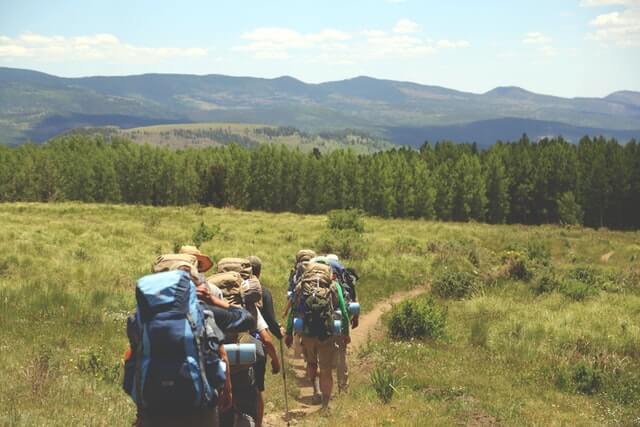
In places like Washington State and Oregon, there are websites dedicated to the registration, profiling, and advertising of local trails for people in the area. A national website called All Trails has a similar function for trails across the country. See our review of the best hiking trails in Alaska to give you more options.
Be forewarned that these sites are usually user-input based so the reliability is not always the best, however, trails that are hard to find (or that don’t exist) are usually pointed out and deleted from the site in a timely manner.
If nothing else, you can always search your friends list on Facebook and Instagram and look for pictures of different hikes. Word of mouth is still one of the best ways to get information about trails in the local area.
Helpful Apps
There are a plethora of helpful phone apps and many are very user friendly and eliminate the need for maps. Apps with maps usually have a “find me” function which allows you to know where you are even when you’re not in service or you have turned on airplane mode.
Though a great advance in hiking technology, you should know the locator function is accurate within ten to fifty meters so it shouldn’t be used for precise navigation.
One of the most cost effective apps is Vienza PDF Maps which allows you to download PDF maps from the internet and use them for navigation. With the app you can either buy maps from the online store or import your own. Either way, the map will integrate with your phone’s GPS and can tell you your location with or without service. It’s a little expensive ($35) but is well worth the cost if you plan to start hiking a lot.
A popular app among long-distance and through hikers is Gut Hook, an app that includes maps, elevation profiles, water points, and many other small pieces of information. This app is very expensive, coming in at over $100, but is worth the price if you plan to start doing overnight hikes or you want to attempt a thru-hike.
Pets
Dogs are usually a common sight on the trail (and the occasional cat on a leash), particularly in State and local parks where the regulations about pets are usually more relaxed. For most National Parks, dogs are allowed on a leash however some do not allow them due to higher concentrations of bears. It’s best to check the regulations on whether pets are allowed prior to setting out.
Pets can be great companions on the trail as they provide infinite entertainment tramping through the bushes and bounding down the trail. It’s a great way for them to expend energy and a great way for you to spend quality time with your pet.
When it comes to the packs for dogs, it’s important to remember not to overload their packs as they can only handle about 10% of their body weight. They aren’t pack animals and overloading them can cause serious injury to their back and joints, similar to overloading your own pack. They are a great option if used correctly, however.
Basic Trail Etiquette
There is one basic rule that covers almost the entirety of basic trail etiquette: don’t be a jerk on the trail. Don’t hog the trail, don’t walk two abreast when other people are coming, say “hi” when other people say “hi,” pick up after your dog, pretty basic common decency.
There are some other basic rules like pass on the right (unless your in Britain or its former colonies) and the person traveling uphill has the right of way when passing, but as long you aren’t rude or inconsiderate, you should be fine.
Ready to go?
Remember hiking is a great way to decompress and get some exercise and can be a lot of fun if you do it correctly and with the right mindset. Good equipment and a basic understanding of where you are and where you’re going will help make the experience a lot better for everyone involved.
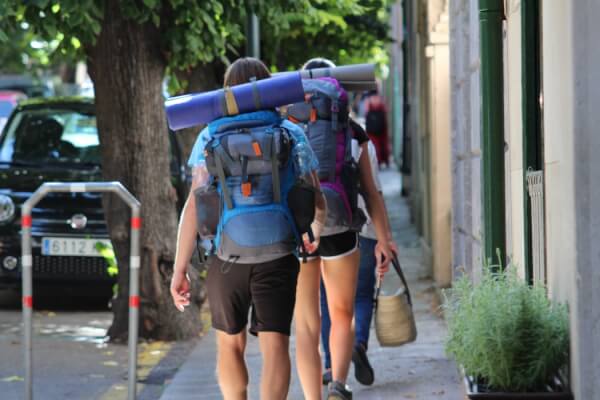
If Sparky is penned up during the day and needs a little exercise, hiking is a great way for both of you to avoid Cabin Fever. We hope these tips for hiking have helped you.
Featured Image Source: https://pixabay.com/photos/hiking-map-orientation-hiking-shoes-1312225/


